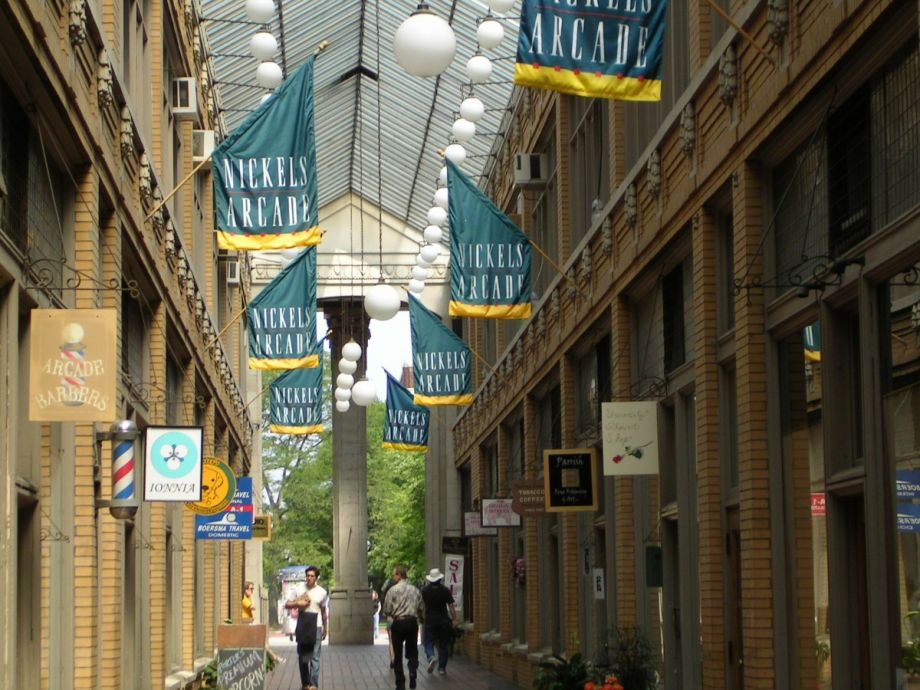Ann Arbor is easy to love. The vibrant tree-filled town is anchored by the creativity and bustle of the University of Michigan. The city’s appeal has catalyzed a remarkably strong housing market in a state that weathered the worst of the foreclosure crisis. In fact, there is now a mass building of luxury lofts in Ann Arbor targeted toward wealthy students and professionals, with rents soaring as high as $2,300 a month. That comes alongside a wave of posh university construction that is driving value higher.
But at the same time, the city serves people who are just trying to get by at the public university — working students, lecturers and staff, not to mention longtime locals who have no relationship with the college. Is there still a place for them in Ann Arbor?
Market forces don’t seem to be enough to ensure that the full diversity of the city can afford to live here. That’s why Ann Arbor’s city council just adopted specific affordable housing targets: It plans to create nearly 2,800 new affordable rental units in the city by 2035. About 340 additional non-student units are planned between Ann Arbor and a next-door township.
This is good news. Affordable housing doesn’t happen by accident, after all. And when a region becomes economically segregated — say, by concentrating wealth in Ann Arbor and poverty in neighboring Ypsilanti — it teeters in a dangerous imbalance. Access is restricted for residents of one town; opportunity is diminished in the other. A report commissioned by Washtenaw County indicates that when housing costs outpace the incomes of working families employed in Ann Arbor, it translates into more commuting, which in turn, increases congestion. That diminishes environmental quality and market appeal while contributing to urban sprawl. Commuting also adds to the burden for working families: Transportation costs are typically their second-largest household expense.
On a regional level, economic segregation makes the county fundamentally unsustainable, as some communities “degrade beyond a point of no return, and others grow in value beyond a point that’s ever again affordable,” according to the report. As is often the case, the housing market is an indicator of more sweeping trends. It turns out that Ann Arbor’s rising housing market corresponds with increasing wage disparity. Households in the city’s metro area that are in the 90th income percentile have seen an 18.8 percent gain since 1979, while those in the 10th percentile had wages drop by 14.4 percent. This wage divide correlates all too neatly with race. “To be in the 90th percentile (income) in Washtenaw County is to be white,” according to the report, “and to be in the 10th percentile is to not be white.”
But despite the collective benefit of affordable housing, Ann Arbor’s inclusionary goals won’t be easy to meet. Even locals who share the ideals of economic integration may bristle at changing zoning laws to allow “accessory dwelling units” in single-family residential neighborhoods, fearing that it will be a destabilizing force. Past efforts to permit carriage houses and above-garage flats have failed, as residents feared that college students would move into the neighborhood, bringing with them a high turnover rate and sometimes less-than-neighborly habits.
There are new challenges too. The county report intelligently recommends that affordable housing developments should be focused in areas where working families will have transportation choices — driving, walking, biking and bus-riding — so that the money they save in a subsidized rental isn’t spent on a long commute to work. But this is tricky, because housing and land is more valuable in those centrally located neighborhoods.
Perhaps most complicated: The report suggests that Ann Arbor will be most effective in creating and preserving affordable housing options if it keeps focused on that goal — a focus that it says is depleted by expending energy on otherwise “appropriate and well-meaning” efforts to respond to the needs of homeless people. Ann Arbor has already made ending homelessness a major civic commitment. Is it really a choice between one and the other? Wouldn’t more affordable and centrally located housing options ultimately reduce homelessness? One would think that finding ways to link its current anti-homelessness strategies with its new housing goals would be a sensible way to go.
And finally, perhaps the biggest challenge of all: Ann Arbor can’t do all this by itself. The housing report also urged Ypsilanti to develop partnerships and strategies to break the cycle of low housing values and foreclosures in its community. The city is already broaching a 30 percent poverty level. “Ypsilanti cannot remain the de facto affordable housing policy for Ann Arbor,” the report says. It suggests that it build its housing market by curtailing the apartmentalization of single-family homes, exploring options for capital improvements on neighborhood amenities and deploying code enforcement.
Given all this, let’s talk brass tacks. What is Ann Arbor actually supposed to do to get the momentum going on its new affordable housing goals?
The first step, which the city council approved at its last meeting, is to create a multi-jurisdictional housing policy working group. Its job would be to break down the housing goals into clear metrics and action steps. Among the ideas it could add to the agenda: pursuing more inclusionary zoning policies that encourage the development of small “starter” homes and mixed-income housing in key neighborhoods. It could also pinpoint locations where affordable infill housing can be built. It could consider implementing an “impact fee,” where developers that don’t include affordable units in their projects contribute financial support to those that do. Co-housing and co-ops should be encouraged through smart policies. It could also experiment with policies that give renters the opportunity to purchase their units. Down in Cincinnati, “equity lease agreements” are one way that the divide between renters and homeowners is being bridged; Ann Arbor might think about adapting that model citywide, or, in coordination with Washtenaw County, region-wide.
One way or another, affordable housing — and more specifically economically integrated housing — requires smart city-level policies. That’s especially important in college towns like Ann Arbor, which straddle the line between serving a monied class, a working class and an ever-shifting class of students, all within a relatively small land area. The best of these policies are coordinated as a regional strategy, with neighboring cities finding common ground in their shared interests in inclusivity, quality of life and long-term sustainability.
The Equity Factor is made possible with the support of the Surdna Foundation.

Anna Clark is a journalist in Detroit. Her writing has appeared in Elle Magazine, the New York Times, Politico, the Columbia Journalism Review, Next City and other publications. Anna edited A Detroit Anthology, a Michigan Notable Book. She has been a Fulbright fellow in Nairobi, Kenya and a Knight-Wallace journalism fellow at the University of Michigan. She is also the author of THE POISONED CITY: Flint’s Water and the American Urban Tragedy, published by Metropolitan Books in 2018.
Follow Anna .(JavaScript must be enabled to view this email address)

















